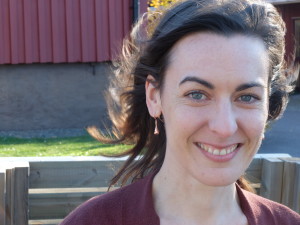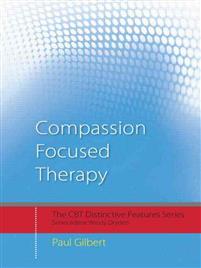If there is any attitude that women are ashamed of in the world, it is being viewed as selfish. So they almost always put the needs of others before their own.
And if there is any emotion that women are ashamed of in the world, it is … Guess what?

Christine Braehler has struggled with them both. Tried to fix others so much that she ended up in empathy fatigue, and suppressed her anger so hard that she could not even feel it.
Exactly these trends she has seen in female participants around the world when she, one of the leading figures within Mindful Self-Compassion, has given retreats and courses the past five years.
”I myself used to be much of a yes-sayer, not feeling my anger and not feeling when people overstepped my bounderies”, she says during her first intensive course in Sweden in mid-October.
40 people, including some from Britain and some from our neighboring Nordic countries, learnt to meet difficult emotions with kindness, savor more of the good ones, pracitce compassion for ourselves and see if we could get hold of our inner critic.
But Christine Braehler has never been that hard on herself, she says.
”My problem was all this trying to help others. To do too much.”
Christine Braehler is the first European to be trained as a teacher in Mindful Self-Compassion and has been in the lead since the start in 2010. She is a Psychology PhD and moved from Bavaria in southeast Germany at 18 to study in UK and became a psychologist in 2005. She got her first job in the National Health psychiatry in Scotland and met patients with complex psychiatric problems. Mindfulness became her way to balance the feeling of being over-exposed to human suffering.
”I really struggled”, she says. “When in clinical training I had to work with terminal illness, as cancer, I reacted quite strongly. I felt completely helpless, distressed by their pain. It was like the bottom fell out.”
She remembers all the patients, scarsely separated by curtains. The nurses, all stressed out. And her feelings of powerlessness when she felt she could not contribute at all.
”It was a stressful milieu with a lot of distress. How could I help all these people? According to the mindfulness books I read at the time, it should be all about acceptance.”

But in that time, Christine Braehler also got in contact with Pema Chodron, a teacher in a Tibetan Buddhist path (Shambhala). Pema Chödrön proposed a different approach: Rather than acceptance, it is about turning towards the suffering, surrender to it and realize that it is a part of life . To do this, you need to bring in compassion and courage.
”According to the Tibetan teachers, there was another way of living with distress. And this was like Ah! to me. To balance my own pain was not important, but to cultivate my loving feeling. That’s what gives me strength, that’s what frees me from fear.”
Christine Braehler took some courses in compassion in her mindfulness association and participated in workshops with the British professor in psychology Paul Gilbert, who developed the compassion-focused therapy, CFT. She says she learned a lot about self-criticism and shame, and that many are afraid of compassion. But also that we rather than having a critical self inside, have a compassionate self.
”All aspects of compassion are in YOU. It is your compassion. Your self-relation. Through this, you can activate your compassionate self, or your Buddha nature”, Christine Braehler says, comparing the CFT training to an ancient Tibetan tradition that she also has been studying.
“Getting to know another way of living with distress was like Ah! to me.

While CFT offers different imaginary work, like imagine an ideal compassionate being, or act it as a way to receive compassion, some Tibetan Buddhist practice is about meditating on a deity who represents an ideal part of ourselves, as compassion. Both methods aim at experiencing the feeling – take it in and let it seed within you. When you dissolve from the deity or the imagined compassionate being, you can activate your heart.
”I was intrigued by these parallels between Tibetan Buddhism and CFT”, Christine Braehler explains.
How would you describe the difference between Compassion Focused Therapy and Mindful Self-compassion?
”The therapy has been developed with people who are severely mentally ill. They can have a deep fear of compassion, which brings up trauma and detachment. Mindful Self-compassion is a non-clinical training, for those who relatively easily can activate their compassion, and address a much broader audience.”
The Buddhist approach showed you another way to live with your despair. What happened to you?
”When I tried to do too much for others, I ended up in empathy fatigue. I got lost in my care for the patients. To help others, I needed to give myself compassion – loving without losing myself.”
But before she reached there, Christine Braehler had – in her own words – “a pivotal moment” when she suddenly could “soften and allow”, terms which are also used in Mindful Self-compassion. Softening in the body, allowing the feelings to be there.

“I needed compassion for myself – loving without losing myself.
”I gave myself up and just felt – let the feeling have me! A surrendering that helped me to be with the difficult feelings.”
Afterwards, she realized a very painful fact, which has helped her not to lose herself in the needs of others: when other people are un-well, there are just limited things you can do for them. But Christine Braehler had wanted to fix everything for everyone.
”But you can’t. It’s not in my power, how much as I would like. When I was able to comfort myself with this fact, and embrace my reactions with compassion, I also could be with the patients rather than fix them. That made me care for them loveingly, and I got more energized.”

Let’s return to the anger. Nowadays, Christine Braehler senses her anger more quickly, and therefore also when others overstep her bounderies. And if she herself has done the same thing …
”We need our anger. I’ve learned to really validate it. It protects me, shows me when something is not okay, and is nothing to be ashamed of. But angry women, especially, have been dismissed as hysterical and made feel ashamed of their anger. But it is a formidable anger!”
Yet, it is important to not just act out our aggression, she explains, nor hold on to it. In that case, you risk going in to resentment, and that is toxic: “Like taking poison yourself, wishing the other person would die.” If the anger, which is a very hard feeling, can be met with compassion, which is so soft, you can learn something. Last year, in such an exercise, Christine discovered that “there is a jewel within every emotion.”
“Angry women, especially, have been dismissed as hysterical and made feel ashamed of their anger. But it is a formidable anger!”
”The anger is so rich. If you can hold it in awareness, and listen to the message, you’ll get an energy clarity, a determination.”
All the women you see feeling ashamed of being selfish and angry – would you say this shame is worldwide?
”Yes, shame is universal, what I’ve seen, and I think it’s more and more common that people are ashamed.”
The most universal about shame is the experience of it as a social emotion. It arises out of our need for belonging. To belong is to contribute to the group and to feel loveable. All this is absolutely fundamental for our survival and well-being.
”Others’ signs of disapproval kill us”, Christine Braehler explains – having that same day carefully gone through the shame mechanisms with us in class.
”We need to exist positively in the minds of others in order to develop a healthy sense of self. It makes us less proned to feel shame, or more resilient to endure it.”
The universal shame is also reflected in what Christine Braehler calls “core negative beliefs.” In the world, there are apparently 10-15 such beliefs, like “I’m unloveable”, “There is something fundamentally wrong with me”, “I can’t contribute”, “I am ugly”, “I’m disgusting”, “I’m a failure”,” I’m selfish”.
”In each one of these, there is 7 percent of humanity believing”, says Christine Braehler.
It means that there are 500 million people out there believing exactly the same thing about themselves. For every belief.
 So – if I’d set up a Twitter account for each statement, then each of them would get 500 million followers?
So – if I’d set up a Twitter account for each statement, then each of them would get 500 million followers?
”Yeah, ha ha! I think there already is a Failure Club in the Netherlands …”
Shame is like being in a black hole, all alone. How do you not get stuck there? Naming it is a progress, Christine Braehler says. Still, the first and hardest step is to explore if there is anything underneath the shame – like fear of being rejected. Then proceed to recognize the shame, and familiarize the feeling.
But it’s so unpleasant. Can you really manage this on your own?
”Yes, because you can soothe yourself with the fact that shame is needed for our survival. Without shame, we’d become psychopaths. We need it to be connected and guided into belonging.”
Christine Braehler knows it is horrible in the black hole all alone, so we can only begin to move down there with the help of compassion, she states and suggests that loving kindness could be “the sunlight on the way down to the shame basement”.
”When I look at things I don’t want to bring out in the light, I can soothe myself for the pain I feel by saying that making mistakes is something universal. It’s about common humanity. And as soon as you soothe yourself with compassion, let it shine into your black hole, shame shifts.”
”Compassion knows about humanity, so why not take the opportunity and bring in the 500 million people out there to share your black hole?”
But I just say: “you can’t fool me, still it’s me who’s done wrong and therefore is worthless!”
”Yes, shame triggers our blind spots, and makes us feel excluded and non-belonging. But then you can be a little humble: I’m only human, I’m learning. I only know that much right now. Help me to change. Even though I feel guilty towards the person I might have hurt, other parts of me are okay. They allow me to say I’m sorry.”
© Agneta Lagercrantz


Jag läste detta för en månad sedan. Och nu är jag tillbaka för att läsa den igen